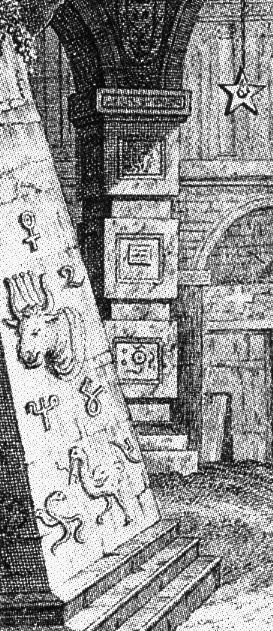|
Like a sentinel restricting the way, an obelisk is standing in the foreground at the left side, covered with alchemical grammalogues and animal symbolics. We recognize a bullhead decorated festively with a sort of crown, a stork devouring a worm and two snakes crossing each other. Planetary signs of Venus, a hint to the goddes Isis, are leading the symbols. In the ancient world Venus met mankind as morning- and eveningstar Luzifer, that means "Lightholder". People believed that her shining was the source of the beauty of men, animals, herbs and flowers. The ancient Mesopotamians called Venus Ishtar. As a planet Venus is associated with the female nature of the moon. The name "Horned Astarte" could be seen in connection with the sickle-moon, which is the Canaanian-Israelite counterpart to the Babylonian-Assyrian Ishtar, the goddess of sexual love. In her service holy sexual lewdness was practised. Ishtar also was venerated as a mother goddess, usualy seen naked with a child in her arms. In the "Magic Flute" the queen of the night might be understood as Ishtar. Perhaps Goethe and Schinkel had similar ideas for the conception of their stage-scenery.
|
